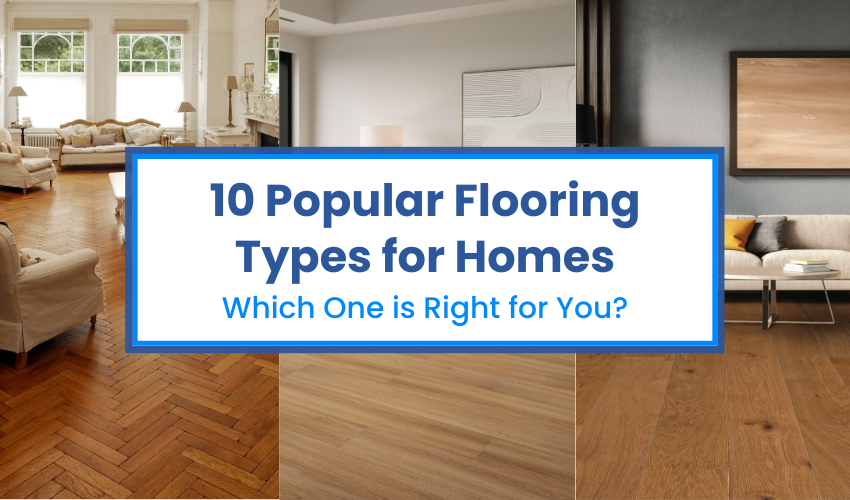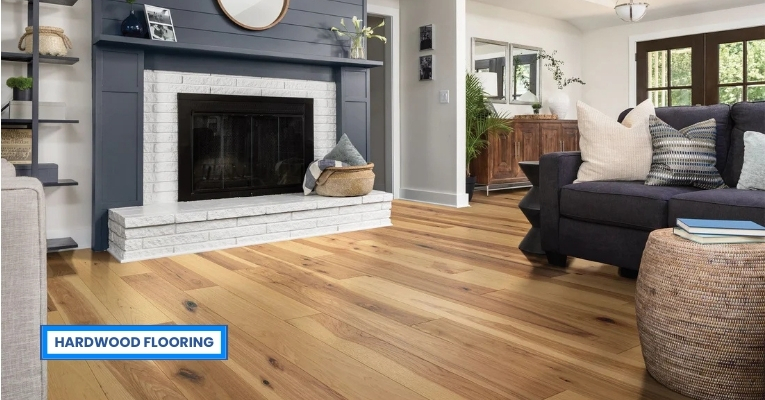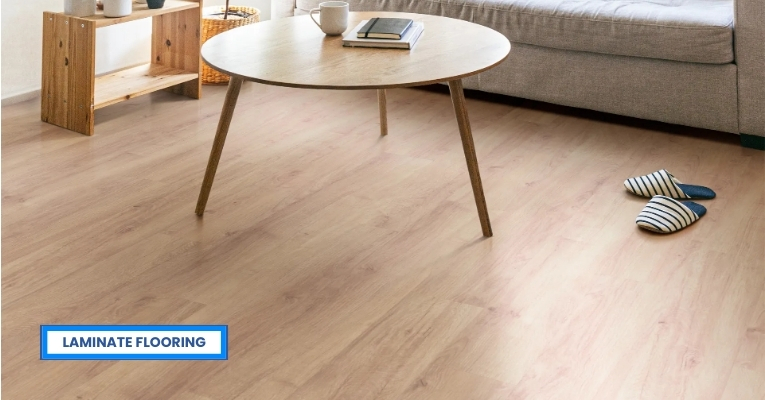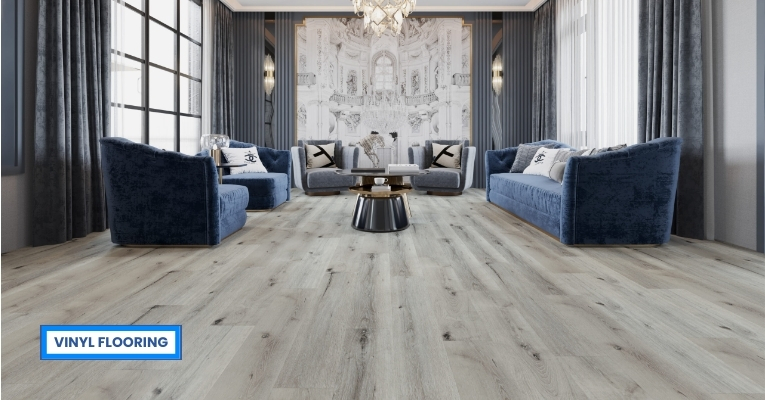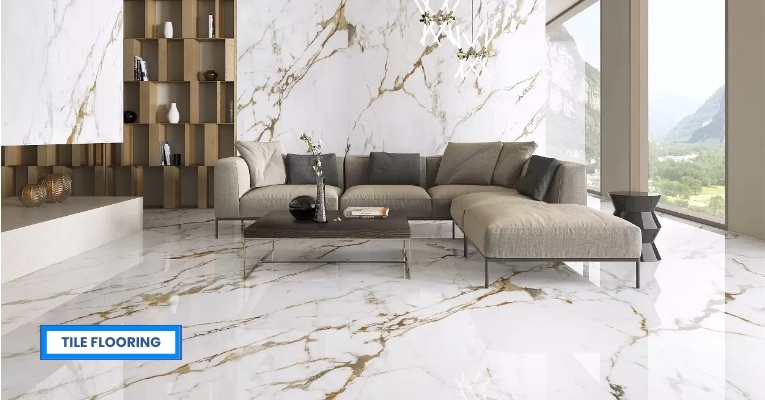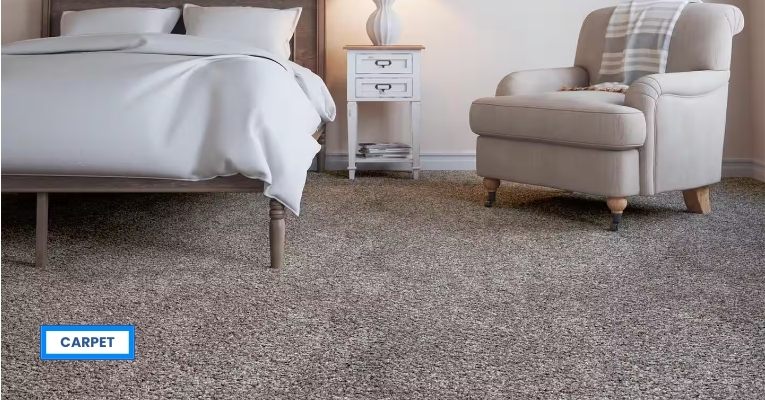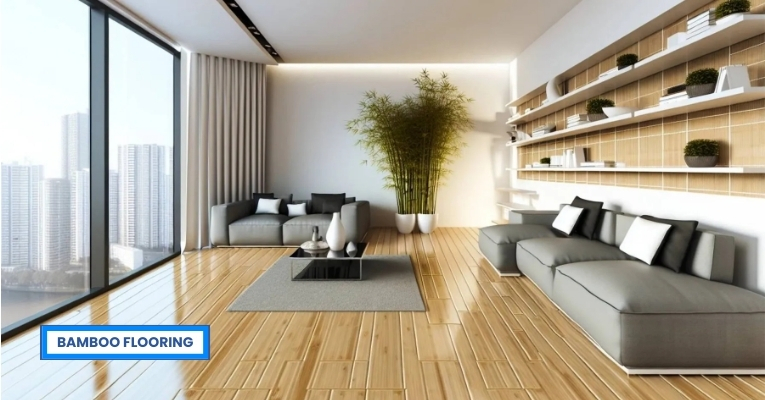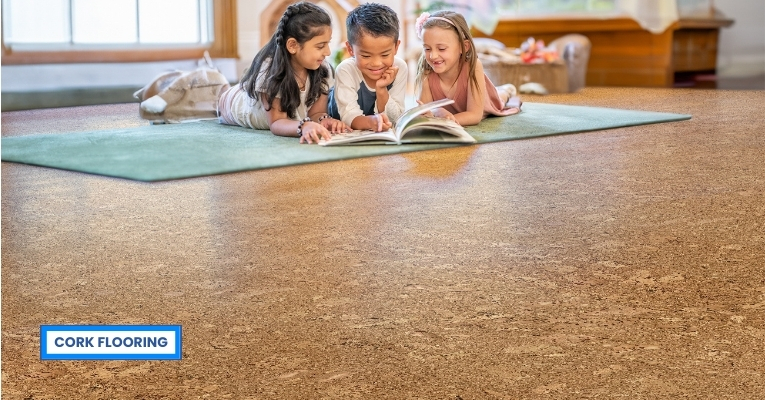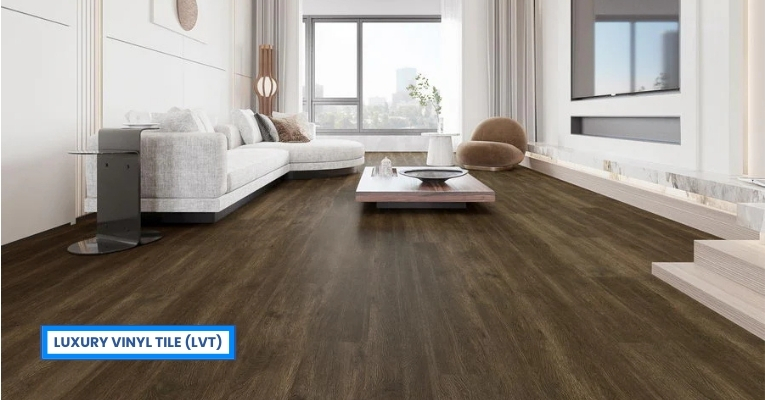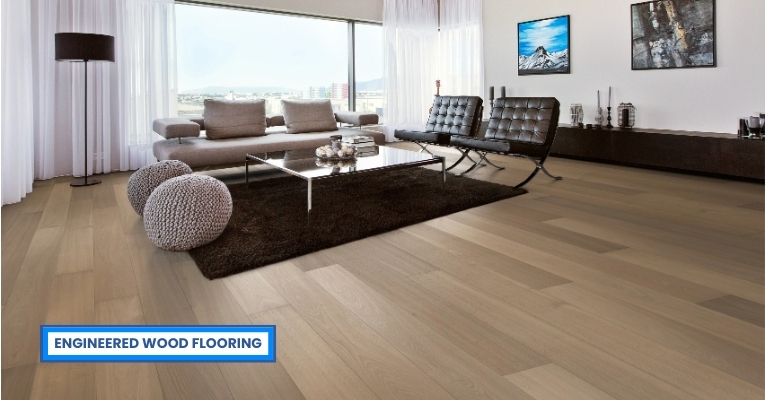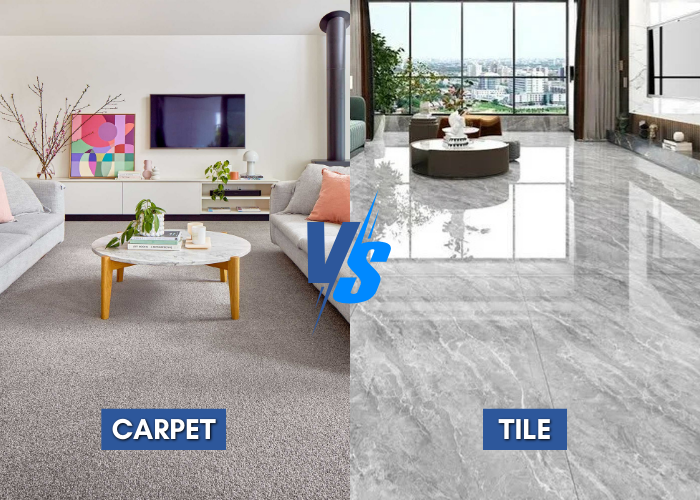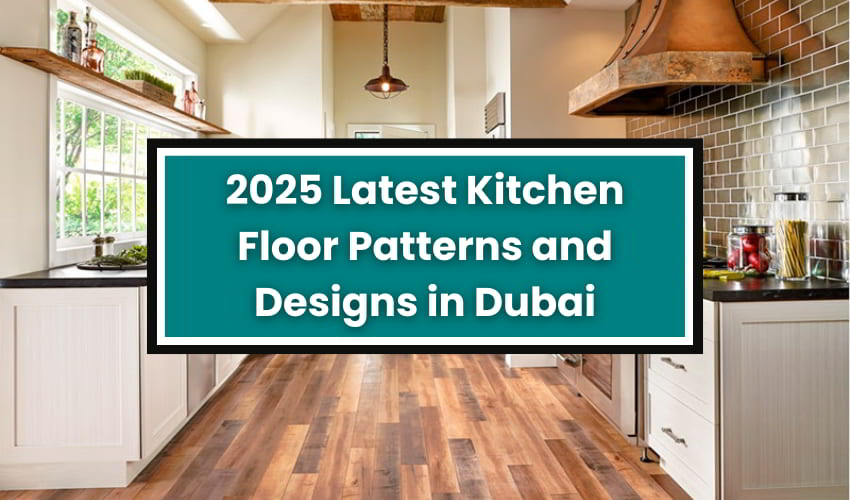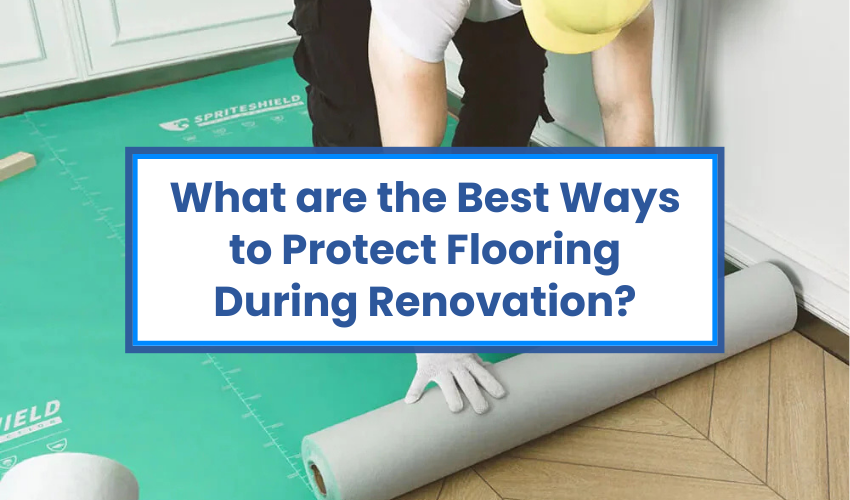You see, most people don’t even know the actual flooring types and their characteristics. Yeah, it’s obvious that you are well aware of the common ones like hardwood, vinyl, and tiles, but there’s a lot more you must never have heard of. While designing or renovating your house, you must see high-quality flooring as a thing to worry about.
You could be seeking a luxurious investment or an affordable choice for your home; we’ve got you covered. In this detailed blog, you will learn 10 of the most popular flooring types. Additionally, we will explain their pros and cons. Let’s get straight to the types.
Top 10 Flooring Types for Your Home
Here are some flooring options for your home to improve its functionality and aesthetics.
1. Hardwood Flooring
Commonly known for its warmness and natural beauty around the world. It comes in some options like oak, maple, cherry, and hickory, which are probably wild trees. It has 2 types. Solid Hardwood is a single piece of wood, it’s allergic-free and can last more than a decade. The second type is Engineered Hardwood, which contains a thin layer of natural wood with plywood on top. Therefore, it’s ideal for people who want their house to feel warm.
Pros:
- When rough in texture, hardwood floors can be re-furnished multiple times, allowing you to restore their true essence.
- Hardwood flooring is durable and appealing, and constructors make it a premium choice because it increases the value of a house.
Cons:
- The materials and installation procedure are a bit more expensive than other flooring options.
- With major shifts in humidity and temperature, the wood may expand and contract. So, it could cause your floor to have gaps or bumps.
2. Laminate Flooring
Designed specifically to copy the look of natural materials such as wood, tile, or stone, it comes in two types. High-pressure laminate flooring is made by fusing multiple layers. It includes a high-density fiberboard core that helps replicate real wood or stone and a protective wear layer that makes it durable. On the other hand, direct-pressure laminate is seen as a much more flexible and affordable choice.
Pros:
- It turns out to be budget-friendly and attractive compared to hardwood or tile flooring options.
- These multi-layered sheets protect minor scratches and juice stains, making laminate flooring a suitable option for office spaces.
Cons:
- It’s a one-off investment. It can’t get a refinish; once it is worn out, it must be replaced.
3. Vinyl Flooring
Vinyl is a versatile yet durable option for your floor. It is made from synthetic materials, the primary one being polyvinyl chloride (PVC). Vinyl sheets, tiles, and planks come in various textures. It is a less expensive and DIY-friendly option that contains multi-layered printed images on top.
Pros:
- Vinyl is highly resistant to moisture, making it suitable for kitchens and bathrooms.
- It is softer and warmer underfoot compared to other materials like tile or hardwood.
Cons:
- Vinyl is a durable material, but objects with sharp edges or heavy furniture can spoil its appearance.
4. Tile Flooring
There are various options, but in general, there are two. With various patterns, tile flooring is mostly applicable on entryways, kitchens, and bathrooms due to its water resistance and durability. Ceramic Tiles are made with a combination of clay, talc, and sand, providing a finish that is suitable for both walls and floors. Porcelain Tiles are a little expensive yet seem to be much more durable.
Pros:
- Tiles are made to withstand heavy foot traffic, making them ideal for house entries and offices.
- Tile does not get algae on top; it seems a safe option for allergy sufferers.
Cons:
- While giving the best appearance, tiles are cold and hard underfoot, which seems uncomfortable for some people, especially in cold weather.
5. Carpet
Carpet flooring is a popular choice among houses as it provides various functionalities. Firstly, it helps hide the cracks on your floor, and it’s warm and comfortable under it. It usually is made from fibers like nylon, polyester, wool, or olefin with patterns and textures. It has 3 main types. Cut-pile carpets are mostly used in bedrooms and living rooms, usually known for their soft, plush feel. Loop pile carpets, on the other side, are durable, and often used in high-traffic areas like hallways and living rooms. Lastly, Cut and loop carpets, as per the name. This type includes both categories to provide an aesthetic appearance by combining cuts and looped fibers.
Pros:
- It is much more comfortable to walk on than other flooring types available out there.
- The soft surface can prevent you from random slips and falls, making it a good choice for your home.
Cons:
- The carpet can get dirty pretty quickly. Stains and spills require a proper wash.
- Regular vacuuming is a must-have as carpets can trap dust and allergens often.
6. Bamboo Flooring
People consider using bamboo for their home surfaces as it is known for its strength. Bamboo flooring comes in two specific types. Solid bamboo comprises thick strips of real Bamboo, while engineered bamboo is artificial, featuring a bamboo veneer onto a plywood core. Both of these offer an impressive look and are durable, making them a popular choice for eco-conscious homeowners.
Pros:
- Bamboo grows to its peak in 3-5 years, making it an environmentally friendly flooring option.
- Bamboo does not harbor dust mites or allergens, as it is naturally immune to those.
Cons:
- Solid bamboo can be refinished, but engineered bamboo contains a thinner veneer, so it can’t get a new finish.
7. Cork Flooring
It is usually made up from the spongy bark of the cork oak tree, which is harvested without harming the tree. Flooring is available in tiles or planks and can be finished in various colors and patterns. It comes in 3 options:
- Cork Tiles: The individual tiles come in over 40 unique patterns and are easy to replace if they become damaged.
- Cork Planks: A Long yet narrow plank that looks similar to hardwood flooring, but it has the characteristics of cork instead of solid wood.
- Engineered Cork: Mainly composed of a cork veneer on top of a composite core to add up more stability and moisture resistance against water.
Pros:
- With a unique texture and sound-absorbing properties, it is an ideal option for people who prefer quietness in their walks.
- Cork does provide thermal insulation, which helps keep your surface cozy and warm.
Cons:
- While cork is water-resistant, excessive moisture can cause real damage. It’s not recommended for areas with high humidity, such as bathrooms.
- It can get scratches and dents from sharp objects or heavy furniture.
8. Concrete Flooring
Concrete flooring is durable and made from cement, water, and aggregates. It is often used in both residential and commercial settings. Concrete flooring provides various finishes, colors, and textures. It has a few types. Polished Concrete offers a sleek, glossy finish that is attractive and durable. It is made by grinding and polishing the surface of the concrete. Stained Concrete enhances the look by providing an aesthetic appeal with colors on top. Simple Concrete involves designing patterns onto the surface to look like stone or brick. The last and most demandable are concrete tiles, which offer a variety of designs and give a luxurious feel.
Pros:
- Concrete is a durable flooring option as it can tackle heavy loads easily.
- It has thermal mass properties, which can help you regulate indoor temperatures.
Cons:
- Concrete can crack over time due to settling, temperature changes, or heavy loads. Proper installation and maintenance are essential here.
- Concrete does not absorb sound well, leading to echoing in large spaces.
9. Luxury Vinyl Tile (LVT)
If we talk about the look, it’s a direct replication of materials like hardwood, stone, or ceramic. Made up of a combination of 3 multiple layers, including a durable layer, a printed design layer, and a backing layer. It comes in 3 types. Glue-down LVT uses adhesive to stick directly to the subfloor, providing a stable and swift installation. Click-Lock LVT can easily get clicked together and can be installed without the need of glue or nails. Last but not least, the Loose Lay LVT relies on its lightweight and friction to stay in place, making it easy to install and remove.
Pros:
- Offers a stylish and much-sophisticated appearance without the high cost.
- An excellent solution for moisture and humidity in areas such as kitchens and bathrooms.
Cons:
- It is similar to natural materials, yet it does not have the same texture or feel.
10. Engineered Wood Flooring
Made up by combining a thin layer of real hardwood veneer on top of a high-density fiberboard (HDF) plywood. It’s beautiful yet with enhanced stability. It’s much more controllable to moisture, making it a popular choice for various environments. Specifically, it comes in two options. One is a single-layer engineered wood that offers a stable core; the other is much thinner and more affordable. Multi-Layer Engineered Wood is composed of several layers of wood to increase its stability and durability.
Pros:
- Engineered wood uses less hardwood than solid wood flooring, making it a more environmentally friendly option.
- Some engineered wood floors can be sanded and refinished, although not as many times as solid hardwood.
Cons:
- It can still be affected by excessive water exposure, as it is man-made wood.
- It’s much more expensive than laminate or vinyl flooring, although it is less costly than solid hardwood.
5 Factors to Consider When Choosing Flooring Types
We understand that the decision matters to you, but before making one, you must read about the 5 most important factors that you would find helpful.
Durability
Every floor has its level of durability. Let’s take an example of hardwood flooring and tiles, known for their sleek look and long-lasting use than usual.
Maintenance:
Floor maintenance is the second most important factor that you cannot neglect. The carpet needs regular vacuuming, while tile and vinyl are generally easier to maintain.
Aesthetic Appeal:
People prioritize their visual effects more than the cost, as flooring impacts a room’s overall design. There are numerous textures to choose from for each flooring type. As experts in this field for over a decade, we suggest you choose a flooring type that matches your vision.
Comfort:
Consider how the flooring will feel underfoot. For example, carpet and cork provide a soft and cushioned surface, while others, like tile and concrete, can be hard and cold. Before making a decision, you must consider your comfort level first.
Cost:
Prices would vary between different types of flooring, so you need to find one that balances quality and affordability. Some options may have a higher initial cost but offer better durability and lower maintenance costs in the long run.
Conclusion:
In this blog, we discussed 10 of the most popular flooring types, their characteristics, potential benefits, and drawbacks. We also discussed 5 key factors that are a must-read for those who are planning to buy flooring for their space.
Selecting the right floor can massively impact the overall appearance of your space—it could be anywhere: a room, a kitchen, or an entire apartment. It’s also essential to consider your personal preferences when making this choice. Whether it’s the durability you want or a specific design you admire, dozens of flooring options will enhance the beauty of your space.
Lastly, we’d like you to share your experience with different flooring types in the comments section below or ask any questions you might have.
